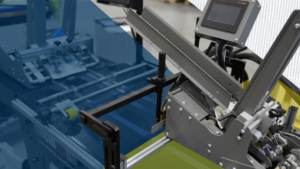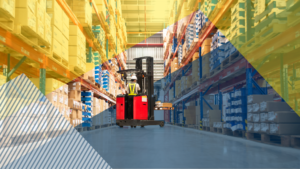Warehouses and fulfillment centers serve similar supply chain purposes, but each provides a distinguishable set of functions essential to the industry. At its core, the difference between them can be easily summarized: warehouses primarily focus on storing goods, fulfillment centers are geared towards efficiently processing orders and shipping products to customers. Digging deeper, though, there are a host of characteristics that separate these two pillars of the supply chain.
What Are The Key Differences Between a Warehouse and a Fulfillment Center
| Fulfillment Center | Warehouse | |
|---|---|---|
| Primary Purpose | Transaction focus: Ship products to consumers faster | Inventory focus: Store and bulk ship product |
| Location | Typically located near major transportation hubs | Can be located in more remote areas |
| Size | Smaller than warehouses—focus on efficiency | Larger than fulfillment centers—focus on capacity |
| Inventory | Lower levels of inventory | Higher levels of inventory |
| Product Turnover | High: product moving in and out | Low: product stored longer term |
| Order Fulfillment | Frequent: addressing DTC needs | Less frequent: B2B focus |
| Product Variety | High: to address rapidly changing consumer needs | Low: focused on select business needs over time |
| Lead Time | Short: multi-channel fulfillment of consumer orders | Long: storage and palette storage for business inventory |
| Staffing | High: to address picking and packing needs | Low: fewer staff with more use of heavy equipment |
| Technology | Advanced, rapidly evolving | Basic, slow to change |
| Cost | More expensive to operate | Less expensive to operate |
The primary difference between the two types of facilities comes down to the goods being stored in them, how long they remain at the facility, and where their next destination lies.
Warehouses
Warehouses are storage facilities where goods are stored before being distributed. They are often used for bulk storage and inventory management. Warehouses typically focus on storing products efficiently and may not have the infrastructure or processes optimized for order processing and shipment.
These storage facilities can accommodate a diverse range of goods, from consumer products to industrial materials. Their versatility allows businesses to store inventory securely until needed, contributing to the efficiency of supply chains across various industries. Despite their seemingly passive role, warehouses play a crucial part in the logistics process, providing a stable environment for goods, ensuring they remain intact and readily accessible when demand arises.
Fulfillment Centers
Fulfillment centers are specialized facilities designed for order fulfillment. They not only store inventory but also handle picking, packing, and shipping of products directly to customers. Fulfillment centers are usually equipped with advanced technology and automation systems to streamline the order fulfillment process, allowing for faster and more efficient processing of orders.
A fulfillment center is all about efficiently getting orders processed and shipped out quickly. While they do include storage space like warehouses, their focus is on short-term storage rather than long-term. Acting as a crucial link between manufacturers and customers, fulfillment centers handle tasks such as order fulfillment, packaging, labeling, and shipping.
One key distinction between a fulfillment center and a warehouse lies in how they generate revenue. While a warehouse makes money by storing goods over time, a fulfillment center thrives by turning inventory over (moving it in, through the facility, and out the door to a new destination).
Fulfillment Warehouse
Primary Function:
- Order Fulfillment: The main function of a fulfillment warehouse is to handle the complete order fulfillment process. This includes receiving orders, picking and packing items, shipping orders to customers, and managing returns.
Key Services:
- Inventory Storage: Storing products that are ready to be picked and packed for individual orders.
- Order Processing: Picking items from inventory, packing them, and preparing them for shipment.
- Returns Management: Handling returned items, inspecting them, and restocking or disposing of them as necessary.
- Value-Added Services: Offering additional services such as kitting, assembly, custom packaging, and personalization.
Customer Focus:
- Direct to Consumer (D2C): Primarily serves e-commerce businesses that ship directly to consumers. The focus is on quick turnaround times and efficient order fulfillment to ensure customer satisfaction.
Distribution Center (DC)
Distribution centers share characteristics with both warehouses and fulfillment centers, but they are specialized facilities designed for efficient distribution within the supply chain. They manage inventory like warehouses but also play a role in order processing and distribution, similar to fulfillment centers, albeit on a larger scale.
In a way, a distribution center (DC) can be considered a mix between a warehouse and a fulfillment center. A distribution center is a facility designed for the efficient distribution of goods to various destinations, which could include retail stores, wholesalers, or other distribution centers. DCs focus on receiving, sorting, and storing inventory in preparation for outbound shipment. They often serve as hubs in the supply chain, consolidating products from multiple sources before redistributing them to their final destinations.
Fulfillment Warehouse
Primary Function:
- Bulk Distribution: The main function of a distribution warehouse is to store products in bulk and distribute them to various locations, such as retail stores, other warehouses, or distribution centers. The focus is on moving large quantities of products through the supply chain efficiently.
Key Services:
- Bulk Storage: Storing large quantities of products, often in palletized form, until they are needed for distribution.
- Receiving and Shipping: Handling the receipt of large shipments from manufacturers and the shipment of large orders to retailers, other warehouses, or distribution centers.
- Cross-Docking: Transferring products directly from inbound to outbound transportation with minimal storage time, which helps to reduce inventory holding costs.
Customer Focus:
- Business to Business (B2B): Primarily serves businesses that require bulk shipments, such as retailers, wholesalers, and other distribution centers. The focus is on efficient bulk distribution and inventory management.
Is a 3PL a Warehouse or a Fulfillment Center?
Both! A 3PL (Third-Party Logistics) provider can offer both warehouse and fulfillment center services, but it depends on the specific capabilities and services a 3PL offers.
Warehouse Services: Some 3PL providers primarily focus on warehousing services. They offer storage solutions for their clients’ goods, managing inventory, and providing distribution services. These warehouses may not have the advanced order processing capabilities of a fulfillment center but are crucial for storing goods in bulk and managing inventory efficiently.
Fulfillment Services: Other 3PL providers specialize in fulfillment services. They operate fulfillment centers that handle the entire order fulfillment process, including receiving, picking, packing, and shipping individual orders directly to customers. These fulfillment centers are equipped with advanced technology and automation systems to optimize order processing and ensure efficient delivery.
Some 3PL providers offer both warehousing and fulfillment services, allowing clients to store their inventory in warehouses and utilize fulfillment center services for order processing and shipping. In such cases, they act as comprehensive logistics partners, providing end-to-end solutions for their clients’ supply chain needs.
What Services Are Provided At A Fulfillment Center?
Fulfillment centers offer a range of services aimed at efficiently processing and fulfilling customer orders for e-commerce businesses and other direct-to-consumer sales channels.. However, there are some providers that are focused on a specific subset of storage and fulfillment like cold storage, medical devices, or bulky items. Here are some general service areas that most fulfillment centers provide to clients:
Storage And Warehousing
Yes, fulfillment centers do offer warehousing services as a fundamental part of their operations, ranging from inventory management to security and safety.
Inventory Storage: Safe and organized storage of products in designated areas.
- Long-term and Short-term Storage: Fulfillment centers provide space for both long-term storage of products and short-term storage for items that are quickly turned over.
- Organized Storage: Products are stored in a well-organized manner, often using shelving, pallet racks, or bin systems to ensure easy access and efficient order picking.
Climate Control: Temperature and humidity control for sensitive items.
- Temperature-Controlled Warehousing: For products that require specific temperature conditions, such as perishables, pharmaceuticals, or electronics, fulfillment centers offer climate-controlled storage areas.
- Humidity Control: Maintaining appropriate humidity levels for products sensitive to moisture.
Organization and Layout
- Optimized Layout: Designing the warehouse layout to maximize space efficiency and streamline the picking and packing process.
- SKU Management: Organizing products by SKU (stock-keeping unit) for efficient retrieval and inventory management.
Security and Safety
- 24/7 Surveillance: Security systems, including cameras and alarms, to monitor the warehouse and protect inventory.
- Access Control: Strict access control measures to prevent unauthorized entry.
Receiving & Inventory Management
Fulfillment centers offer comprehensive inventory management services as part of their overall suite of solutions. These services are designed to help e-commerce and retail businesses efficiently manage their inventory, reduce costs, and ensure timely order fulfillment.
Real-Time Inventory Tracking
- Automated Systems: Using advanced warehouse management systems (WMS) to track inventory levels in real-time.
- Barcode/RFID Scanning: Utilizing barcode or RFID scanning technology for accurate and instant updates on inventory movements.
Stock Control
- Stock Replenishment: Monitoring inventory levels and automatically triggering reorders to avoid stockouts.
- Min/Max Levels: Setting minimum and maximum stock levels to maintain optimal inventory levels.
Receiving and Inspection
- Inbound Processing: Receiving incoming shipments from suppliers, inspecting them for accuracy and quality, and updating inventory records.
- Quality Control: Conducting quality checks to ensure that products meet required standards before being added to inventory.
Inventory Organization
- SKU Management: Organizing products by SKU (stock-keeping unit) for efficient storage and retrieval.
- Categorization: Grouping similar products together to streamline picking and packing processes.
Order Processing
- Order Syncing: Automatically syncing orders from various sales channels to ensure accurate inventory levels across platforms.
- Allocation: Allocating inventory to specific orders based on real-time data.
Cycle Counting and Audits
- Regular Cycle Counts: Performing periodic cycle counts to verify inventory accuracy without disrupting operations.
- Full Audits: Conducting comprehensive inventory audits to reconcile physical inventory with system records.
Reporting and Analytics
- Inventory Reports: Generating detailed reports on inventory levels, turnover rates, and stock aging.
- Sales Analytics: Analyzing sales data to forecast demand and optimize inventory levels.
Returns Management
- Reverse Logistics: Handling returned products, inspecting them for quality, and updating inventory records accordingly.
- Restocking: Restocking returned items that are in sellable condition back into inventory.
Safety Stock Management
- Buffer Stock: Maintaining safety stock to mitigate the risk of stockouts during peak demand periods or supply chain disruptions.
- Demand Forecasting: Using historical sales data and trends to predict future inventory needs and adjust safety stock levels.
Integration with E-commerce Platforms
- Seamless Integration: Integrating with major e-commerce platforms and marketplaces to ensure consistent inventory updates and order management.
- API Access: Providing API access for custom integrations and real-time data exchange between systems.
Order Processing
Fulfillment centers offer comprehensive order processing services as a key part of their operations. These services are designed to ensure that customer orders are accurately and efficiently handled from the moment they are placed until they are shipped.
Order Receipt and Verification
- Automated Order Import: Orders are automatically imported from various sales channels (e.g., e-commerce platforms, marketplaces) into the fulfillment center’s system.
- Order Verification: Each order is checked for accuracy, ensuring that all required information is complete and correct.
Order Picking
- Pick Lists: Generating pick lists that detail the items and quantities needed for each order.
- Efficient Picking Methods: Utilizing various picking methods such as batch picking, zone picking, or wave picking to optimize the process.
- Barcode/RFID Scanning: Using barcode or RFID scanning to accurately track picked items and reduce errors.
Order Packing
- Packaging Materials: Selecting appropriate packaging materials to protect items during transit.
- Custom Packaging: Offering custom packaging solutions, including branded packaging or special packaging for fragile items.
- Packing Slips and Inserts: Including packing slips, invoices, and any promotional inserts or materials.
Shipping and Labeling
- Shipping Label Creation: Generating and printing shipping labels with carrier information.
- Carrier Selection: Automatically selecting the most cost-effective and efficient shipping method based on destination, weight, and delivery speed.
- Shipping Documentation: Preparing necessary shipping documents and customs paperwork for international orders.
Order Tracking
- Real-Time Updates: Providing real-time tracking information to customers and businesses, allowing them to monitor the status of orders from fulfillment to delivery.
- Notifications: Sending automated notifications to customers regarding order confirmation, shipment, and delivery status.
Returns Processing
- Return Authorization: Managing return authorization requests and processing returns according to the business’s policies.
- Inspection and Restocking: Inspecting returned items, updating inventory records, and restocking sellable items.
Customization and Value-Added Services
- Kitting and Assembly: Bundling multiple items into a single package or assembling products before shipping.
- Personalization: Adding personalized notes, labels, or gift wrapping as requested.
Integration with E-commerce Platforms
- Seamless Integration: Integrating with major e-commerce platforms (e.g., Shopify, WooCommerce, BigCommerce, Amazon) to ensure smooth order processing.
- API Access: Providing API access for custom integrations and real-time data exchange.
Reporting and Analytics
- Order Reports: Generating detailed reports on order processing times, shipping costs, and delivery performance.
- Analytics: Analyzing order data to identify trends, optimize processes, and improve customer satisfaction.
Shipping & Delivery
Fulfillment centers offer comprehensive shipping and delivery services as a core part of their operations. These services are designed to ensure that products are efficiently and accurately shipped to customers.
Carrier Selection and Management
- Multiple Carrier Options: Fulfillment centers typically partner with various shipping carriers (e.g., USPS, UPS, FedEx, DHL) to offer multiple shipping options.
- Carrier Selection: Automated systems select the most cost-effective and efficient carrier based on the order’s destination, weight, and delivery speed requirements.
Shipping Label Creation
- Label Printing: Generating and printing shipping labels with accurate address and carrier information.
- Integrated Systems: Seamlessly integrating with carrier systems for quick label generation and tracking number assignment.
Shipping Rate Optimization
- Negotiated Rates: Leveraging negotiated rates with carriers to offer discounted shipping costs.
- Rate Shopping: Comparing rates from different carriers to find the best shipping option for each order.
Order Tracking and Notifications
- Real-Time Tracking: Providing real-time tracking information for each order, allowing customers and businesses to monitor the shipment’s progress.
- Automated Notifications: Sending automated emails or SMS updates to customers regarding their order status, including shipment and delivery updates.
International Shipping
- Customs Documentation: Handling customs documentation and compliance for international shipments.
- Duties and Taxes: Calculating and managing duties, taxes, and any other fees associated with cross-border shipping.
Shipping Documentation
- Packing Slips: Including packing slips and invoices in shipments.
- Shipping Manifests: Preparing and managing shipping manifests for bulk shipments.
Customizable Shipping Options
- Express Shipping: Offering expedited shipping options for faster delivery.
- Economy Shipping: Providing cost-effective shipping options for non-urgent deliveries.
Consolidation and Bulk Shipping
- Order Consolidation: Combining multiple orders for the same customer into a single shipment to reduce shipping costs.
- Bulk Shipping: Managing large volume shipments for wholesale or B2B orders.
Special Handling and Packaging
- Fragile Items: Offering special packaging and handling for fragile or high-value items.
- Temperature-Controlled Shipping: Providing temperature-controlled shipping options for perishable or sensitive products.
Returns Processing
Fulfillment centers offer returns processing as an integral part of their services. Effective returns processing, also known as reverse logistics, helps businesses manage returned products efficiently and maintain customer satisfaction.
Return Authorization Management
- Return Merchandise Authorization (RMA): Issuing RMAs to customers for authorized returns, ensuring that returns are processed systematically.
- Customer Support: Providing support to customers during the return process, answering queries, and assisting with return requests.
Return Shipping
- Return Shipping Labels: Providing pre-paid return shipping labels to customers, making it easy for them to send back items.
- Carrier Coordination: Managing the logistics of return shipments with various carriers.
Receiving Returned Items
- Inbound Processing: Receiving returned items at the fulfillment center and logging them into the system.
- Inspection: Inspecting returned products for damage, defects, or other issues to determine their condition.
Quality Control
- Evaluation: Assessing the condition of returned items to determine whether they are resellable, need repairs, or should be disposed of.
- Refurbishment: Performing necessary repairs or refurbishment to make items resellable.
Restocking
- Inventory Update: Updating inventory records to reflect the returned items that are fit for resale.
- Repackaging: Repackaging items in new or original packaging for future orders.
Disposition Management
- Resale: Restocking returned items that are in sellable condition.
- Recycling: Managing the recycling or disposal of items that cannot be resold.
- Liquidation: Arranging for the liquidation of items that are still valuable but cannot be sold through the usual channels.
Refunds and Exchanges
- Refund Processing: Coordinating with the business to process refunds for returned items.
- Exchanges: Managing the exchange of returned items for new products, ensuring customers receive replacements quickly.
Reporting and Analytics
- Return Analysis: Providing detailed reports on return rates, reasons for returns, and the financial impact of returns.
- Improvement Insights: Analyzing return data to identify patterns and suggest improvements in product quality, packaging, or customer service.
Customer Communication
- Return Status Updates: Keeping customers informed about the status of their return, from receipt to resolution.
- Feedback Collection: Gathering customer feedback on the return process to enhance future service.
Value-Added Services
Fulfillment centers offer a range of value-added services designed to enhance the overall customer experience and meet specific business needs. These services go beyond basic warehousing and order fulfillment to provide additional customization, packaging, and handling solutions.
Kitting and Assembly
- Kitting: Combining multiple individual items into a single package or kit, often used for subscription boxes, promotional bundles, or gift sets.
- Assembly: Assembling products or components before shipping, such as putting together parts of a product or preparing items for retail display.
Custom Packaging
- Branded Packaging: Creating custom-branded packaging that reflects the company’s branding and enhances the unboxing experience.
- Specialized Packaging: Providing packaging solutions for fragile, perishable, or high-value items that require extra protection.
Personalization
- Personalized Inserts: Including personalized notes, thank-you cards, or promotional materials in packages.
- Custom Labels: Adding custom labels, tags, or stickers to products or packaging based on specific customer or business requirements.
Gift Wrapping
- Wrapping Services: Offering gift wrapping services for special occasions, including holidays, birthdays, and anniversaries.
- Customized Gift Messages: Including personalized gift messages or cards as specified by customers.
Quality Control and Inspection
- Product Inspection: Conducting detailed quality checks on products before they are shipped to ensure they meet specified standards.
- Testing: Performing functional tests on electronic items or other products to verify their operation and quality.
Special Handling
- Fragile Items: Providing extra care and protection for fragile items during picking, packing, and shipping.
- Hazardous Materials: Handling and shipping hazardous materials in compliance with relevant regulations and safety standards.
Product Customization
- Engraving or Embroidery: Adding custom engravings, embroidery, or other personalization options to products.
- Custom Product Configurations: Modifying products to meet specific customer requirements before shipping.
Marketing and Promotional Services
- Promotional Inserts: Including promotional materials such as coupons, flyers, or samples in outgoing orders.
- Subscription Box Fulfillment: Managing the fulfillment of subscription boxes, including curation, kitting, and shipping.
Compliance and Regulatory Services
- Labeling Compliance: Ensuring products are labeled in accordance with regulatory requirements (e.g., for food, pharmaceuticals, or electronics).
- Documentation: Preparing necessary documentation for compliance with industry standards and regulations.
Benefits Of Outsourcing To A Fulfillment Provider
Fulfillment providers add value for businesses through the expertise and cost savings they provide. They allow businesses an affordable means to expand operation while lessening risk. Here are some additional ways fulfillment centers can help a company grow.
- They Have Access To Advanced Warehousing & Fulfillment Technology: Fulfillment centers leverage advanced technologies such as warehouse management systems (WMS), automated picking systems, and RFID tracking to optimize operations and improve efficiency. These technologies enable faster order processing, accurate inventory tracking, and real-time visibility into stock levels. By outsourcing fulfillment, businesses gain access to cutting-edge technology without the capital investment required for in-house implementation.
- They Provide Geographic Expansion and Market Reach: Fulfillment providers often have multiple distribution centers strategically located across different regions or countries. By partnering with a global fulfillment network, businesses can expand their geographic reach, enter new markets, and reach customers more efficiently. Fulfillment centers offer local fulfillment capabilities, faster shipping options, and reduced transit times, enabling businesses to compete effectively in diverse markets and deliver a superior customer experience.
- They Help Reduce Risk And Ensure Compliance: Fulfillment providers assume responsibility for mitigating risks associated with order fulfillment, including inventory loss, damage, theft, and shipping errors. They implement robust security measures, quality controls, and insurance policies to protect valuable inventory and ensure regulatory compliance. By outsourcing fulfillment, businesses can mitigate operational risks, enhance supply chain resilience, and focus on strategic risk management initiatives.
How Nautical Provides The Perfect Order Fulfillment Experience
At Nautical Manufacturing & Fulfillment, we specialize in providing order fulfillment solutions for businesses across diverse industries. With our dedicated team of logistics experts, we offer end-to-end fulfillment services tailored to your specific needs. Whether you’re a small e-commerce startup or a multinational corporation, we can help you streamline your supply chain, reduce costs, and delight your customers with fast, reliable service. Partner with us for your fulfillment needs and experience the difference of premier order fulfillment.
Frequently Asked Questions – Order Fulfillment
Is A Fulfillment Center The Same As A Warehouse?
While both fulfillment centers and warehouses are storage facilities for goods, they serve different purposes in the supply chain process. A warehouse is primarily used for storing goods. It typically involves receiving, storing, and organizing inventory. On the other hand, a fulfillment center is a more dynamic facility that not only stores inventory but also processes orders for shipping directly to customers.
How Do Fulfillment Centers Make Money?
Fulfillment centers generate revenue by charging businesses for various services, including storage fees for housing inventory, order fulfillment fees for picking, packing, and shipping orders, shipping fees for handling delivery, additional services like kitting and returns processing, and technology fees for access to management software.
Do Fulfillment Centers Provide 2-Day Shipping?
Many fulfillment centers offer expedited shipping options such as 2-day shipping as part of their services. However, it will depend on several factors like location, order processing times, and partnerships with carriers. These will determine whether specific fulfillment centers can offer these shipping options to their clients.
What Are Fulfillment Services?
Fulfillment services handle the storage, processing, and shipping of orders for businesses. These services include inventory management, order processing, packing, and shipping.




